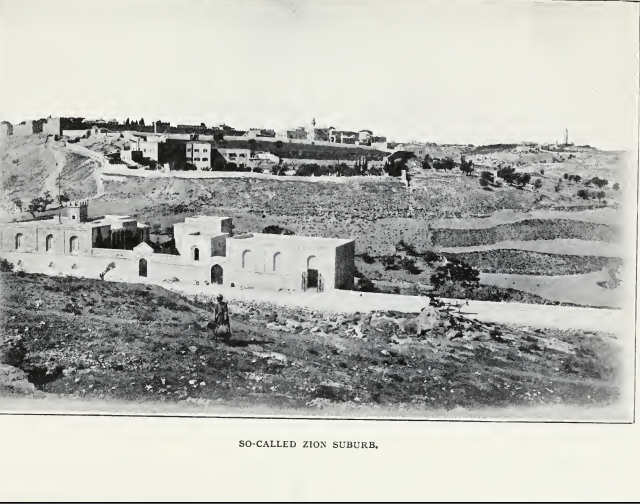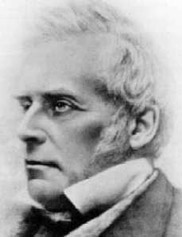|
William Irvine (Scottish Evangelist)
William Irvine (; 1863–1947), sometimes Irvin or Irwin in contemporary documents, was an evangelist from the late nineteenth century, and continuing through the first half of the twentieth century. He is regarded as the founder and early propagator of the Two by Twos movement. Rapid growth was experienced in its initial decades, and Irvine eventually came into conflict with the regional overseers whom he had appointed to administer the now worldwide religion. Irvine was excommunicated by the overseers in 1914 and eventually moved to Jerusalem, supported by loyalists who followed him out of the movement. He spent his remaining years writing apocalyptic and prophetic letters to his remaining followers around the world from Jerusalem, where he died in March 1947. Early life Irvine was born in Kilsyth, located in North Lanarkshire, Scotland, the third of eleven children of a miner. The town of Kilsyth counts Irvine as one of its "famous sons". He was raised in the Presbyterian F ... [...More Info...] [...Related Items...] OR: [Wikipedia] [Google] [Baidu] |
Kilsyth
Kilsyth (; Scottish Gaelic ''Cill Saidhe'') is a town and civil parish in North Lanarkshire, roughly halfway between Glasgow and Stirling in Scotland. The estimated population is 9,860. The town is famous for the Battle of Kilsyth and the religious revivals of the 18th, 19th, and 20th centuries. The town now has links with Cumbernauld at one time being part of Cumbernauld and Kilsyth District Council. The towns also have the same members of parliament at Holyrood and Westminster. Location Historically part of Stirlingshire, Kilsyth is at an elevation of above sea level and occupies a narrow strip of land between the Kilsyth Hills to the north and the River Kelvin to the south. To the east and west it is bordered by marshland and bogs. The centre of the town is close to the confluence of the Garrell and Ebroch burns. From earliest recorded times Kilsyth was one of the main routes between Glasgow, Falkirk and Edinburgh, and is very close to the Roman Antonine Wall, the Forth ... [...More Info...] [...Related Items...] OR: [Wikipedia] [Google] [Baidu] |
Revival (religious)
Christian revivalism is increased spiritual interest or renewal in the life of a church congregation or society, with a local, national or global effect. This should be distinguished from the use of the term "revival" to refer to an evangelistic meeting or series of meetings (see Revival meeting). Proponents view revivals as the restoration of the church itself to a vital and fervent relationship with God after a period of moral decline. Revivals within modern Church history Within Christian studies the concept of revival is derived from biblical narratives of national decline and restoration during the history of the Israelites. In particular, narrative accounts of the Kingdoms of Israel and Judah emphasise periods of national decline and revival associated with the rule of various wicked or righteous kings, respectively. Josiah is notable within this biblical narrative as a figure who reinstituted temple worship of Yahweh while destroying pagan worship. Within modern Church ... [...More Info...] [...Related Items...] OR: [Wikipedia] [Google] [Baidu] |
Cooneyites
: ''This article refers to the Christian sect founded by Edward Cooney. In some places, the term ''Cooneyites'' refers to Two by Twos, the church from which this sect split in 1928.'' The Cooneyites are a Protestant sect which split from the nameless church commonly known as Two by Twos; the church was originally called "the Tramps" or "the Go-Preachers" founded by William Irvine, often referred to today as "The Truth" or, confusingly, "Cooneyites". The term "Cooneyites" prior to 1928 refers to the group described under Two by Twos. After that time, followers who were expelled from the Two by Twos along with Edward Cooney are called "Cooneyites". In some areas, the Two by Two church, which has gone under various labels, has continued to be labeled as "Cooneyite" by outsiders up to the present. Both the Cooneyites and the Two by Twos reject the term "Cooneyite". Edward Cooney was a noted preacher during the 1890s and early 20th century. He joined William Irvine's new movement as an ... [...More Info...] [...Related Items...] OR: [Wikipedia] [Google] [Baidu] |
Mount Zion Cemetery, Jerusalem (Protestant)
The Protestant Mount Zion Cemetery (a.k.a., Jerusalem Mount Zion Protestant Cemetery, german: link=no, Zionsfriedhof; he, בית הקברות הפרוטסטנטי בהר ציון) on Mount Zion in Jerusalem, is a cemetery owned by the Anglican ''Church Missionary Trust Association Ltd.'', London, represented by the Episcopal Church in Jerusalem and The Middle East. In 1848 Samuel Gobat, Bishop of Jerusalem, opened the cemetery and dedicated it as ecumenical graveyard for congregants of Anglican, Lutheran, Reformed (Calvinist) and old Catholic faith. Since its original beneficiary, the Bishopric of Jerusalem was maintained as a joint venture of the Anglican Church of England and the Evangelical Church in Prussia, a united Protestant Landeskirche of Lutheran and Reformed congregations, until 1886, the Jerusalem Lutheran congregation preserved a right to bury congregants there also after the Jerusalem Bishopric had become a solely Anglican diocese. Location The cemetery ... [...More Info...] [...Related Items...] OR: [Wikipedia] [Google] [Baidu] |
Two Witnesses
In the Book of Revelation, the two witnesses (, ''duo martyron'') are two prophets who are mentioned in Revelation 11:1-14. Christian eschatology interprets this as two people, two groups of people, or two concepts. Some believe they are Enoch and Elijah, as in the Gospel of Nicodemus, since they are the only two that did not see death as required by the Scriptures. Others believe them to be Moses and Elijah because they appeared during the transfiguration of Jesus, or because Enoch was not Abraham's descendant. Some also believe that they are Moses and Elijah due to the description of what they are to do. They have the power to shut the heavens (Elijah) and turn water into blood (Moses) Dispensationalist Christians believe that the events described in the Book of Revelation will occur before and during the Second Coming. Biblical narrative Textual analysis According to the text, the two witnesses are the "two olive trees and the two lampstands" that have the power to destr ... [...More Info...] [...Related Items...] OR: [Wikipedia] [Google] [Baidu] |
John The Apostle
John the Apostle ( grc, Ἰωάννης; la, Ioannes ; Ge'ez: ዮሐንስ;) or Saint John the Beloved was one of the Twelve Apostles of Jesus according to the New Testament. Generally listed as the youngest apostle, he was the son of Zebedee and Salome. His brother James was another of the Twelve Apostles. The Church Fathers identify him as John the Evangelist, John of Patmos, John the Elder, and the Beloved Disciple, and testify that he outlived the remaining apostles and was the only one to die of natural causes, although modern scholars are divided on the veracity of these claims. John the Apostle is traditionally held to be the author of the Gospel of John, and many Christian denominations believe that he authored several other books of the New Testament (the three Johannine epistles and the Book of Revelation, together with the Gospel of John, are called the Johannine works), depending on whether he is distinguished from, or identified with, John the Evangelist, John t ... [...More Info...] [...Related Items...] OR: [Wikipedia] [Google] [Baidu] |
Book Of Revelation
The Book of Revelation is the final book of the New Testament (and consequently the final book of the Christian Bible). Its title is derived from the first word of the Koine Greek text: , meaning "unveiling" or "revelation". The Book of Revelation is the only apocalyptic book in the New Testament canon. It occupies a central place in Christian eschatology. The author names himself as simply "John" in the text, but his precise identity remains a point of academic debate. Second-century Christian writers such as Papias of Hierapolis, Justin Martyr, Irenaeus, Melito of Sardis, Clement of Alexandria, and the author of the Muratorian fragment identify John the Apostle as the "John" of Revelation. Modern scholarship generally takes a different view, with many considering that nothing can be known about the author except that he was a Christian prophet. Modern theological scholars characterize the Book of Revelation's author as "John of Patmos". The bulk of traditional sources ... [...More Info...] [...Related Items...] OR: [Wikipedia] [Google] [Baidu] |
Mandatory Palestine
Mandatory Palestine ( ar, فلسطين الانتدابية '; he, פָּלֶשְׂתִּינָה (א״י) ', where "E.Y." indicates ''’Eretz Yiśrā’ēl'', the Land of Israel) was a geopolitical entity established between 1920 and 1948 in the region of Palestine under the terms of the League of Nations Mandate for Palestine. During the First World War (1914–1918), an Arab uprising against Ottoman rule and the British Empire's Egyptian Expeditionary Force under General Edmund Allenby drove the Ottoman Turks out of the Levant during the Sinai and Palestine Campaign. The United Kingdom had agreed in the McMahon–Hussein Correspondence that it would honour Arab independence if the Arabs revolted against the Ottoman Turks, but the two sides had different interpretations of this agreement, and in the end, the United Kingdom and France divided the area under the Sykes–Picot Agreementan act of betrayal in the eyes of the Arabs. Further complicating the issue was t ... [...More Info...] [...Related Items...] OR: [Wikipedia] [Google] [Baidu] |
Azusa Street Revival
The Azusa Street Revival was a historic series of revival meetings that took place in Los Angeles, California. It was led by William J. Seymour, an African-American preacher. The revival began on April 9, 1906, and continued until roughly 1915. On the night of April 9, 1906, Seymour and seven men were waiting on God on Bonnie Brae Street, "when suddenly, as though hit by a bolt of lightning, they were knocked from their chairs to the floor," and the other seven men began to speak in tongues and shout out loud praising God. The news quickly spread; the city was stirred; crowds gathered; services were moved outside to accommodate the crowds who came from all around; people fell down as they approached, and attributed it to God; people were baptized in the Holy Spirit and the sick were said to be healed. The testimony of those who attended the Azusa Street Revival was "I am saved, sanctified, and filled with the Holy Ghost" in reference to the three works of grace of Christian perfect ... [...More Info...] [...Related Items...] OR: [Wikipedia] [Google] [Baidu] |
Dispensation Principle
Dispensationalism is a system that was formalized in its entirety by John Nelson Darby. Dispensationalism maintains that history is divided into multiple ages or "dispensations" in which God acts with humanity in different ways. Dispensationalists generally maintain a belief in premillennialism, a future restoration of Israel and in a rapture that will happen before the second coming, generally seen as happening before the tribulation. Theology Progressive revelation Progressive revelation is the doctrine in some forms of Christianity that each successive book of the Bible provides further revelation of God and his program. For instance, the theologian Charles Hodge wrote: The New Testament writings, then, contain additional information regarding God and his program beyond the writings of the Old Testament. Disagreement exists between covenant theology and dispensationalism regarding the meaning of revelation. Covenant theology views the New Testament as the key to interpret ... [...More Info...] [...Related Items...] OR: [Wikipedia] [Google] [Baidu] |




